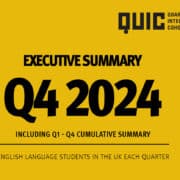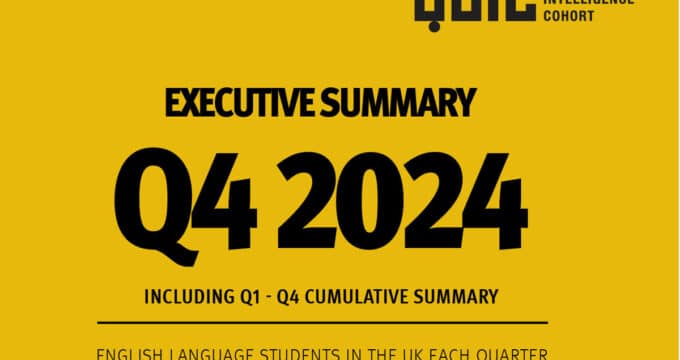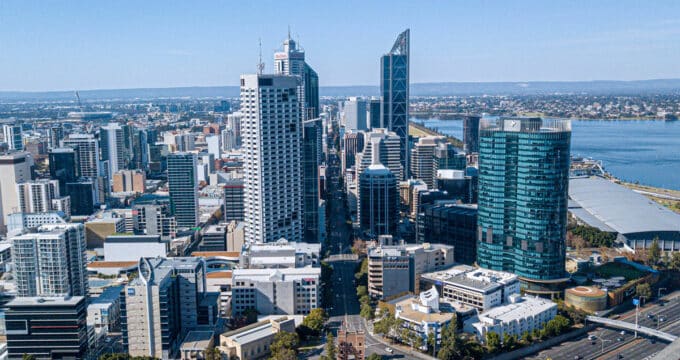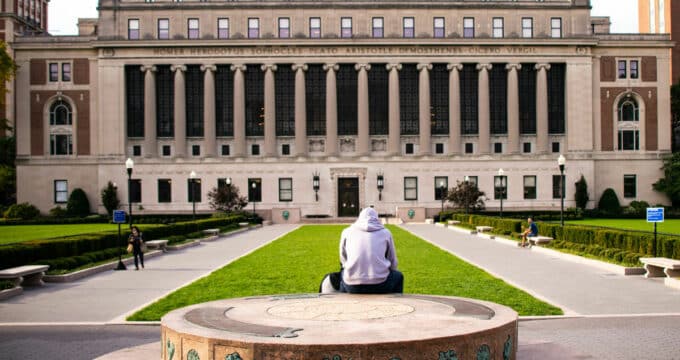Australia announces cap on student commencements for 2025
- The Australian government announced today that a cap on “new student commencements” will go into effect in 2025 once the legislation passes in Parliament
- The cap is being formally referred to as the National Planning Level (NPL)
- It applies to the higher education and vocational education sectors, but excludes schools and standalone English-language providers
- Leaders in Australia’s higher education sector are decrying the move and warning that the NPL, as well as other immigration rules introduced over the past year, are inflicting damage on the industry and the Australian economy that will be felt for years
Despite vigorous opposition by Australia’s international education stakeholders to the prospect of a cap on foreign student numbers, that:
“Subject to the passage of legislation before the Parliament, [the government] will set a National Planning Level (NPL) for new international student commencements of 270,000 for calendar year 2025.”
The NPL – i.e., a cap on new international students coming to Australia – will be allocated across the higher education and vocational education sectors and its aim is to constrain international commencements to pre-pandemic levels. The government says the cap will help to restore the social licence of the industry and ensure that growth is better managed.
clarifies what is meant by a “new international student commencement”: “An international student will count as a new overseas student commencement when they are onshore and start their first non-exempt course at their first provider. This includes each time the student changes into a non-exempt course at a different provider." (Editor's note: New rules around “visa hopping” mean that there will only be a small number of students who are eligible to change courses.)
Some sub-sectors will be excluded from the NPL:
- Schools
- Higher degree by research programmes
- Standalone English-language providers (ELICOS)
- Non-award programmes
Also excluded from the cap are “Australian Government-sponsored scholars, students that are part of an Australian transnational education arrangement or twinning arrangement, key partner foreign government scholarship holders, and students from the Pacific and Timor-Leste.”
Assuming that the pending legislative amendments are passed by the Australian parliament, the NPL will come into effect in January 2025.
How will the cap be distributed?
Just over half of the new international students anticipated under the cap will enrol in public universities, with 145,000 international commencements in 2025 earmarked for this sub-sector. This overall cap is said to be roughly equivalent to the number of higher education commencements in 2023. However, a government media release explains, “[Individual institutional caps] will be outlined in an International Student Profile (ISP). Publicly funded universities have been provided with their indicative ISPs…In developing ISPs, a number of factors have been considered based on data provided by universities, including recent levels of new international student commencements and the concentration of international enrolments in their onshore student cohorts.”
In other words, individual universities with higher concentrations of foreign students, or that have grown more quickly in recent years, could receive lower cap allocations. While those with lower proportions of international enrolment may receive additional student spaces under the NPL.
A post-announcement analysis from Australian National University Professor elaborates on the cap formula for universities: "The caps have been calculated with 2019 pre-pandemic enrolments at each public university as their base. For universities who increased their enrolments of international students between 2019 and 2023 a formula applies, depending on their 'international concentration.' This is based on the percentage of their enrolments in Australian campuses who are international students.
Universities with low concentrations of international students can have all their growth to 2023 included in their 2025 cap. However universities with concentrations above 37% will get to keep only 50% of their growth.
This is likely to affect the more prestigious universities the most. This includes Group of Eight universities, such as the University of Sydney, the University of Melbourne, the University of Queensland and the Australian National University. They will have to cut their commencing student intakes in 2025 compared with 2023 and 2024."
Outside of the publicly funded universities, about 30,000 of the student spaces available under the cap will be given to other universities and non-university providers and about 95,000 will go to the VET sector. The government adds: “Providers with a higher ratio of international students will receive a lower allocation, encouraging them to diversify their student base.”
In percentage terms, that cap allocation for the VET sector appears to represent a more severe reduction from 2023 levels, whereas the bigger story for higher education is the cap effect of re-allocating those student places from Group of Eight universities to other institutions, as outlined in the cap formula above.
The impact of that model, however, could be severe. Professor Norton adds, "The government has jumped ahead of its legal authority here because the process of recruiting and enrolling international students for next year is already well underway. Education providers need to know how many students they can take...While fairer visa processing will help some education providers increase their enrolments, capping popular universities below student demand won’t necessarily help other universities in Australia.
Few students who want to attend high-prestige universities or want to live in large cities will go to lower prestige or regional universities instead. They just won’t come to Australia."
What does the cap replace?
Speaking at the AFR Higher Education Summit in Sydney last week, Minister of Education Jason Clare confirmed that the forthcoming NPL will replace Ministerial Directive 107, an immigration framework that classified Australian institutions into different risk levels and offered preferential treatment to “low-risk” institutions. The directive also triggered a significant spike in visa rejection rates for students from some countries.
“Ministerial Direction 107 categorises universities into three different categories and affects the speed at which your visas are processed based on risk,” said Minister Clare at the AFR Summit. “It means that some universities have more students today than they had last year. It means a number of universities have significantly less. It also means that the time it’s taken to process a visa for a university has taken longer in the case of universities that are in that second and third category…A lot of universities have made the point to me that that’s affected their bottom line. It’s affected the way international students see us as a country, if it’s taken a long time to get a visa or they’ve been rejected, and I’ve sought a better way to provide more certainty for them about the number of students they can educate each year and process those visas up to that level quicker.”
In , Universities Australia Chair Professor David Lloyd puts some numbers on that impact, explaining that “visa grants in higher education are down 23% on last year, causing [an] AUD$4.3 billion hit to the economy and putting 14,000 jobs in our sector at risk.”
Prof Lloyd, along with other university and VET leaders, is outraged that the government sees fit to introduce the NPL following the damage inflicted by Directive 107. He writes: “Even without legislated powers to limit international student numbers, the Government has already taken a sledgehammer to the international education sector.”
Prof Lloyd points out what is at stake:
“Every dollar from overseas students is reinvested back into Australia’s universities. Having fewer students here will only widen the funding gap at a time universities need greater support.
There will also be significant flow-on effects for other sectors of the economy that rely heavily on international students.
International students accounted for more than half of Australia’s GDP growth last year, almost singlehandedly saving the nation from recession. The sector is our second biggest export behind mining, worth almost AUD$50 billion to our economy and supporting around 250,000 jobs.”
Group of Eight (Go8) Chief Executive Vicki Thomson , in which she lambastes both the government’s Ministerial Directive 107 and the new NPL cap:
“Today the Federal Government announced that it intends recklessly to proceed with international student caps – introducing cuts to Go8 members who do the heavy lifting in research, education as well as underpinning Australia’s global reputation as a high-quality international education provider.
As such, the Group of Eight (Go8) remains implacably opposed to international student caps for the damage they will do to the sector and the nation.
We saw yesterday at the Senate inquiry that there is no economic modelling on the impact of caps, and this has not changed with today’s announcement of a National Planning Level target of 270,000 for international education. This policy was bad yesterday and it is bad today – the unexplained number gives us no comfort.
What has changed is the Government today trying to steamroll the sector into accepting detailed caps before a clearly sceptical Senate has passed judgement on the ill-conceived legislation that enables these enrolment limits.
In doing so, the Government has confused the issues even further and increased the distrust of the sector in its capability to manage this vital AUD$48 billion export industry.
The Government has essentially responded to one reckless policy folly, Ministerial Direction 107, with another – punishing the Universities that have proven to be the most popular for the very best global students.
Tellingly, the Minister also confirmed that Ministerial Direction 107 has significantly damaged the global reputation of Australia’s international education sector. The introduction of caps will compound this damage.”
reports that The University of Melbourne has received its indicative cap and is studying its financial implications. The university’s vice-chancellor, Professor Duncan Maskell, said: “The cap on international students will have detrimental consequences for our University, the higher education sector generally, and the nation for years to come.”
For additional background, please see:














